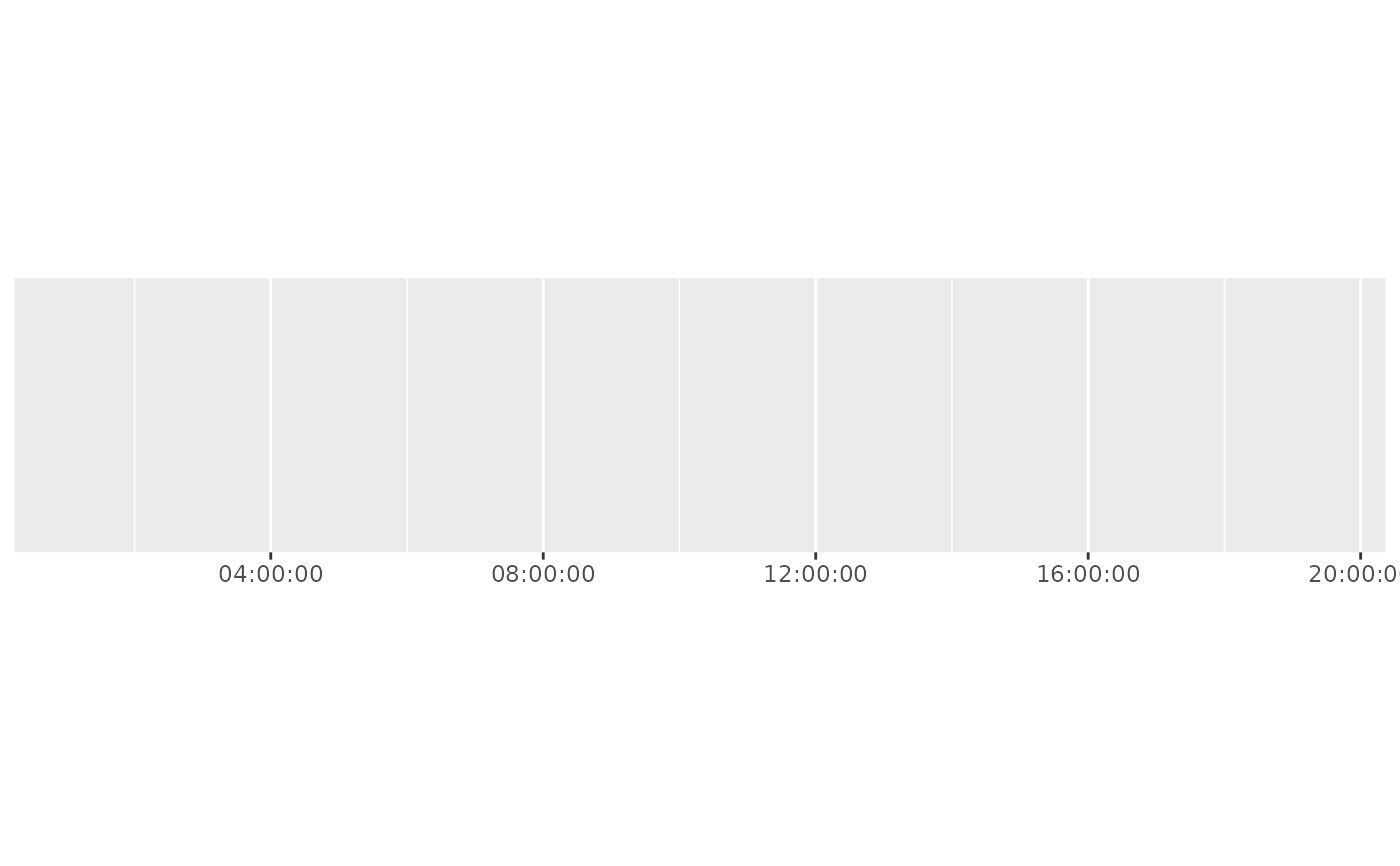transform_timespan() provides transformations for data encoding time passed
along with breaks and label formatting showing standard unit of time fitting
the range of the data. transform_hms() provides the same but using standard
hms idioms and formatting.
Examples
# transform_timespan allows you to specify the time unit numeric data is
# interpreted in
trans_min <- transform_timespan("mins")
demo_timespan(seq(0, 100), trans = trans_min)
#> scale_x_continuous(trans = trans_min)
 # Input already in difftime format is interpreted correctly
demo_timespan(as.difftime(seq(0, 100), units = "secs"), trans = trans_min)
#> scale_x_continuous(trans = trans_min)
# Input already in difftime format is interpreted correctly
demo_timespan(as.difftime(seq(0, 100), units = "secs"), trans = trans_min)
#> scale_x_continuous(trans = trans_min)
 if (require("hms")) {
# transform_hms always assumes seconds
hms <- round(runif(10) * 86400)
t <- transform_hms()
t$transform(hms)
t$inverse(t$transform(hms))
t$breaks(hms)
# The break labels also follow the hms format
demo_timespan(hms, trans = t)
}
#> Loading required package: hms
#> scale_x_continuous(trans = t)
if (require("hms")) {
# transform_hms always assumes seconds
hms <- round(runif(10) * 86400)
t <- transform_hms()
t$transform(hms)
t$inverse(t$transform(hms))
t$breaks(hms)
# The break labels also follow the hms format
demo_timespan(hms, trans = t)
}
#> Loading required package: hms
#> scale_x_continuous(trans = t)
